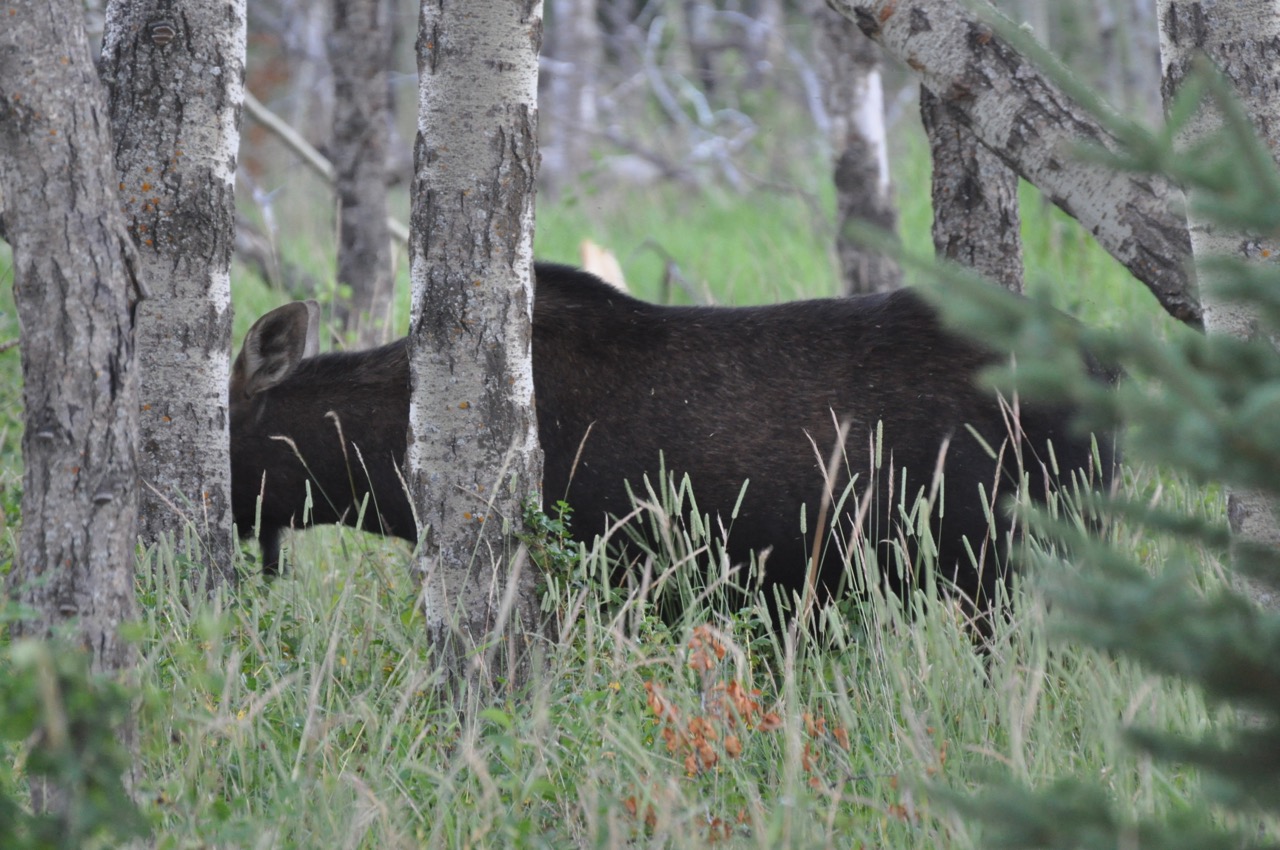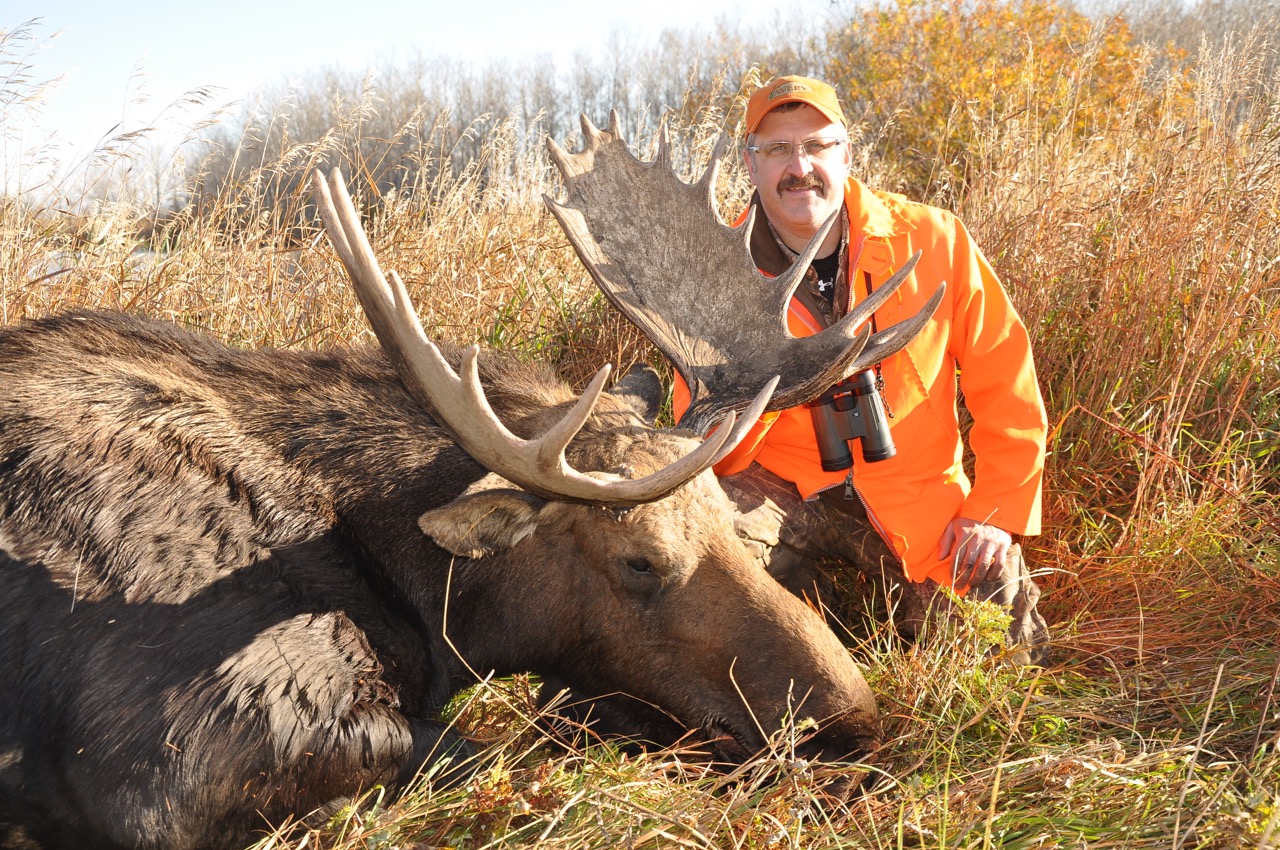MOOSE MOVES
For an exciting change, try spotting and stalking bulls instead
Advertisement

#2 USE YOUR SENSES
If you move slowly and quietly into the wind, you may be able to stalk right up to a moose. Use your eyes and ears more than your feet, stopping every step or two to look and listen.
A relaxed, feeding moose isn’t a quiet animal—it will break branches and snap twigs underfoot as it walks and eats. A bull’s antlers will sometimes tap against trees, too. If a moose is in water, there will be sloshing sounds as it trods along and dunks its head to feed on aquatic plants. And during the rut, a bull will sound like a freight train as it moves along, thrashing its antlers against trees.
Advertisement
Also look for visual clues. Often times, a feeding moose will pull a branch down and nip off the highest leaves and twigs, causing the branch to whip back into place. Don’t expect to see the full body of a moose in the wide open. Instead, look for parts of the animal—its ears, eyes, antlers or long legs, or the horizontal line of its back—in the openings between branches and trees.
When glassing, move your binoculars slowly and smoothly to avoid drawing attention to yourself. Check out both distant and nearby cover, looking through the branches and deep into the shadows. If you spot a moose, take the time to watch it and assess the situation. Determine whether it’s a bull or cow, and whether it’s alone or with other moose. If it’s on the move, try to figure out where it’s headed. If the moose is not coming directly toward you, you may need to change position to cut it off. If you find a bedded moose, slowly move into a position that will allow for a clear shot.

